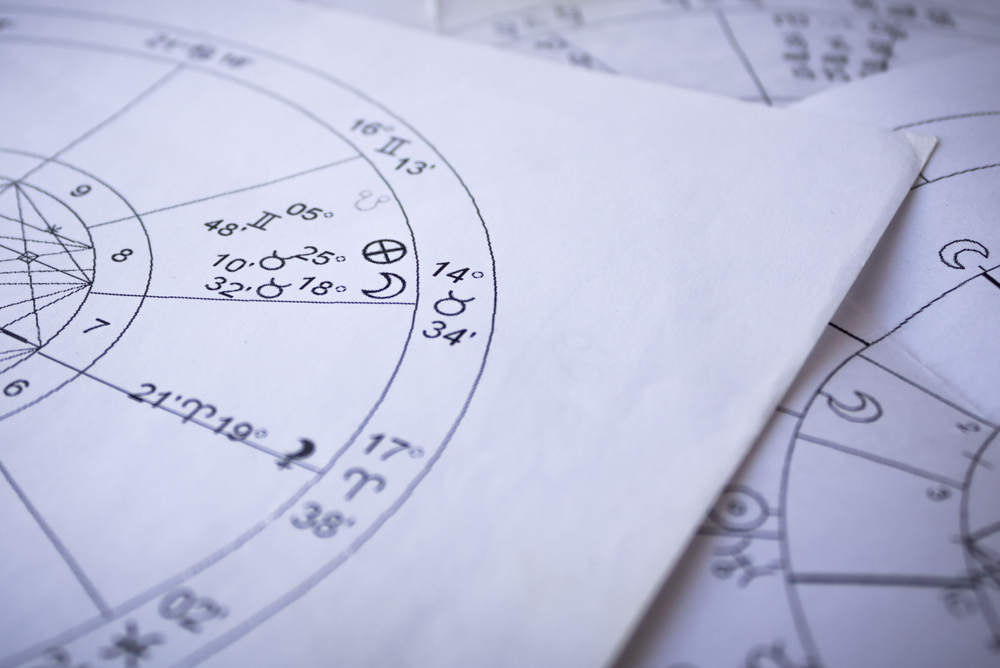
You’re probably familiar with the astrological year: twelve sun signs, lasting about 30 days each, with unique traits ascribed to each sign. But what if there were a larger zodiac cycle – one that could impact human history over several millennia? Astrologers speak of the Great Cycle: the same tropical zodiac we know and love, except each sign lasts centuries instead of days. Just what is this cycle and how does it work? Digging into astrology, astronomy, and history reveals some fascinating answers.
How Our Night Sky Moves
Our planet has North and South Poles because of its rotational axis. Polaris, part of the Ursa Minor constellation, is our current North Star because it appears almost directly overhead at the North Pole. But Polaris wasn’t always our polar star. EarthSky explains that Thuban was the North Star when the ancient Egyptians constructed the pyramids about 5,000 years ago.
So why does our North Star change? Our planet’s rotational axis wobbles because of solar and lunar gravitational forces. That wobble causes the constellations, including those in the zodiac, to look as if they’re moving. Our spring equinox is always around March 21, but the Sun’s apparent position in the zodiac at that point changes slightly each year. When the tropical zodiac was first created, that point was in the constellation of Aries. Currently, it’s in the constellation of Pisces. Scientists call this cycle the precession of the equinoxes, which takes around 26,000 years to complete.
Zodiac Ages in the Great Cycle
Each astrological age comes with a different North Star and spring equinox point. But here’s the kicker: in the precession of equinoxes, the zodiac is shifting backward instead of forward. If we’re in the Piscean age right now, for instance, the Egyptians would have likely built their pyramids during the Taurean age.
Astrologers using the Great Cycle concept believe that each age’s characteristics are defined by its sign. The Age of Aries, for example, would be marked by war and conquest. Symbols and values associated with Jesus Christ could reflect the Piscean age. The fish is an obvious giveaway, but Piscean values include compassion and healing.
Astrologers and astronomers don’t agree on the exact length of the Great Cycle. The precession of the equinoxes lasts 25,772 years. But some astrologers claim that it’s a 25,860-year cycle with each age lasting about 2,160 years. The tropical astrological year treats all zodiac constellations as if they’re the same size. Yet some are much larger than others in our night skies, so the Sun takes longer to travel through them. Because of this, some argue that ages for larger constellations like Leo would last longer than those of smaller ones like Capricorn.
The Age of Aquarius?
New Age thinkers believe that the “Age of Aquarius” brings a new era of human potential. There’s hope for worldwide peace, greater spiritual enlightenment, and growth in knowledge and technology. AstroStyle lists Aquarian attributes such as originality, open-mindedness, and logic, and the sign is associated with technology and teamwork. With those traits, it’s no surprise that people see the Age of Aquarius as a good thing.
So when does the Aquarian Age begin? There’s no consensus on that either, as another EarthSky piece explains. If you base it on constellation boundaries set by the International Astronomical Union, the Age of Aquarius dawns in 2597 C.E. Some point to 2012 based on the position of Regulus, a star in the Leo constellation. Others claim it began as early as 1447 C.E. or won’t arrive until 3597 C.E.
Meaning in the Stars?
Everywhere we look, we humans search for meaning and patterns. The Great Cycle is one more example, applying astrological traits to different ages of human history. No matter what one thinks about astrology, many people use it to help them make sense of our world.

